Blog Content
When it comes to technology, there are some universal truths. Smartphones have taken over how we communicate and access the internet. And GPS devices have changed the way we travel and navigate our daily lives. Both of these advancements are utilities — things we use as shortcuts to make our lives easier.
Spreadsheets fall into this category too. Think about all the different things we use spreadsheets for — balancing budgets, listing supplies we need for a party, doing our taxes.
And in business, there are even more practical uses for spreadsheets, with various departments in charge of tracking information, data, and internal operations. Spreadsheets are a universal tool for companies of all sizes. They are easy to understand and interpret — which is why they serve as the backbone for a successful operation.
That’s where Airtable comes in. It has taken this concept and flipped it on its head. Founded in 2012 by Howie Liu, along with former Google Maps guru Andrew Ofstad, the company’s goal from the beginning has been to revolutionize the spreadsheet.
Liu’s thinking was that although spreadsheets were prevalent, they weren’t being used the way they were supposed to be. His background at Salesforce left him discouraged with what he saw as spreadsheet misuse — clutter everywhere and no clear way to maximize potential and give businesses the jolt they crave.
His idea? Create a new platform where spreadsheets are readable, have a multitude of practical uses beyond those existing platforms are capable of, and do so in a way that makes sense to users.
Idea to reality
Even in its early stages, Airtable drew lots of attention — a pitch to Ashton Kutcher on the set of Two and a Half Men convinced the actor to invest and left him considering the software’s possibilities beyond Hollywood.
With early encouragement, the Airtable team got to work. It took two years behind the scenes before they had anything resembling what Airtable is today. Its earliest versions were more of a grid, designed as what has been called “spreadsheets on steroids.”
Off the support of more funding and buzz, Airtable officially launched in 2015. Over the next few years, the company grew exponentially. The team continued to tinker, gathering user feedback and shaping the software around new and exciting functions.
Airtable is more than just a spreadsheet — it’s a database. And now, with a valuation at $1 billion, Airtable has reimagined the spreadsheet in its own image. In this chapter, we’ll explore Airtable’s functionality, the steps it’s taken to separate itself from the pack, and exactly what makes its software useful.
Airtable goes into the great beyond
Understanding how to use Airtable and its functions means first understanding what it is and what it isn’t. Airtable is not just a spreadsheet application. Rather, it’s more of a spreadsheet-database hybrid.
Airtable’s wide functionality means it can mold itself to a wide variety of businesses — Tesla and Time magazine are among those that use its services. The former uses it to track all of its vehicles, and the latter relies on the software to track its editorial calendars for the year.
Airtable is best known for its ability to store data, manipulate it, and present it in ways that make sense for your business — all in a flexible and user-friendly way.
Read on as we explore Airtable’s capabilities, what exactly a spreadsheet-database hybrid is, and how these things can improve your business’s efficiency.
More than a spreadsheet
When you think of spreadsheets, you probably imagine Microsoft Excel. And while the program has plenty of worthwhile uses, it also has limits. For instance, you can’t connect data or formulas across different Excel spreadsheets. But Airtable has formula and data linking possibilities galore. And where Excel doesn’t have calendar operations, Airtable does.
If you’re learning how to use Airtable, you should be aware of its customer relationship management, or CRM, capabilities. You can manage workflow and set up alerts to track task progress. You can also customize how your tables are arranged.
Say you’re working on a certain project, and you feel confident about certain aspects but want to take a closer look at others — Airtable gives you this prioritization option and arranges the view on your screen in a way that emphasizes this process.
The software also keeps things nice and clean. You can add dropdown menus, checkboxes, and file attachments. And because Airtable is cloud-based, instead of sending a document back and forth between your team, everyone can collaborate and make changes in real time.
The main difference between a simple spreadsheet and what Airtable offers is its complexity. Airtable has more functions and allows for more creativity in data storage and project management.
Airtable’s differences set it apart
You’d think that comparing things in a spreadsheet would be painless, but with the more basic functions of Excel, it’s actually quite difficult to put everything together in a way that’s helpful for in-depth analysis. Not so with Airtable. Its dynamic interface means easier-to-use technology and ease in fixing missteps along the way.
Airtable made a very smart decision early in the software’s development — it monitored how users engaged with the software. After all, if you want to attract as many users as possible, it makes sense to give them features that keep them coming back.
Airtable separates itself by creating what’s called “relational databases,” which draw connections between your company operations and how people in the company work together to keep it going.
The possibilities are limitless. For example, your business can chart supply and demand, keep a list of all your employees handy, or chart basic growth over time. Learning how to use Airtable means discovering new operational functions to make your day easier.
The relational database makes it much less painful to form connections and draw a straight line from one row of data to another. For example, if you’re seeing a loss of profit in your production, you can link different parts of your Airtable database to see where you might be losing money on a certain product.
Think of a database as a clean hallway after all the dust is swept away, providing you a clear image of your business and potential cause-and-effect relationships that might exist within it.
Airtable makes things easier
Learning how to use Airtable means leveling up your business’s operations and processes. Because the company is constantly adapting to what its users need most, you’re always going to have a reliable platform to examine and input whatever information or data you need to store.
In the next section, we’ll explore the different benefits Airtable offers and all of the different businesses best suited to take advantage of it.
Who benefits from Airtable?
We’ve explored what Airtable is and discussed some of its functions. Now it’s time to dive into how Airtable can help your business.
The best way to do this is to look at how other companies have adapted Airtable’s software for their operations. If you know how other businesses are using Airtable to increase their efficiency, you can gather the best of these ideas and mold them to your needs.
Who benefits from Airtable?
In the years since launching, Airtable has maintained its popularity. We already mentioned that Tesla uses Airtable for inventory tracking. WeWork uses it to sort customer feedback. That’s the great thing about Airtable — you can beef it up or down depending on what you need it to do.
Airtable’s different pricing plans offer services at an affordable cost. Plus, the platform features hundreds of templates specifically designed for various businesses, including startups, nonprofits, publishing houses, and more. In fact, the amount of ground Airtable covers is so vast that it’s worth exploring in more detail.
Here are some of the different industries and business functions that Airtable is involved with.
Product launches
Introducing a new product in your business can be scary. Organization is key, and you need to make sure everyone on your team is on message.
Airtable’s product launch template is designed to make sure that you keep everything in order, from the beginning of the process right up until liftoff. Whether you work for a small company introducing a new aspect of your business or a startup showing off the second phase of your development, Airtable can morph to fit your needs. You can even use the template for smaller projects like a press release.
As to the features of this template, collaboration is the name of the game. Each member of your team can personalize their view of internal records around their respective tasks. This keeps things in order and sets clear lines of responsibility from one part of your team to another. Your sales team probably has different priorities than your production team, and Airtable allows for this separation.
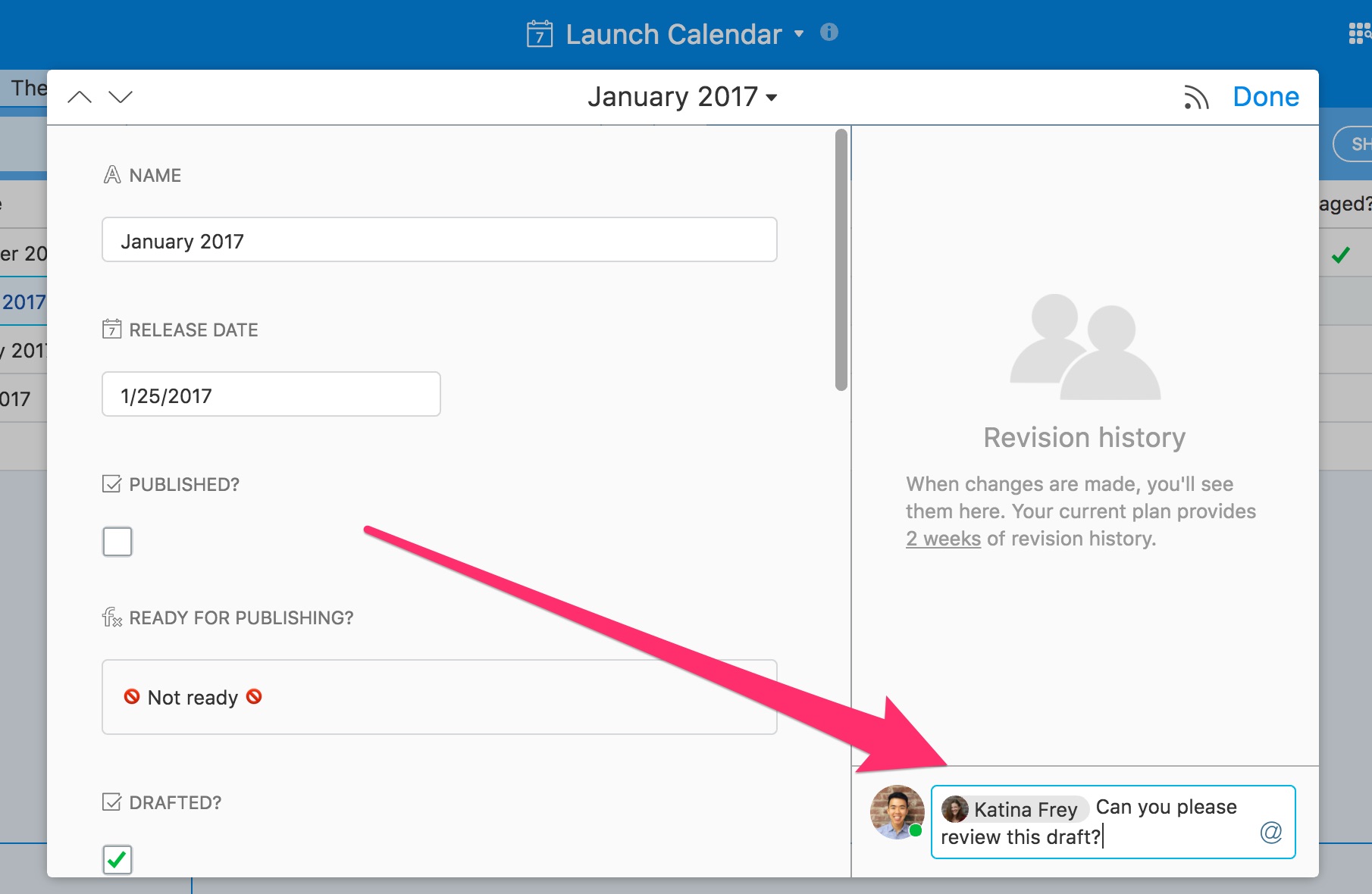
Airtable also has what’s known as a “kanban view,” which allows you to divide tasks into cards, creating a clear visual of the items you have to complete. Plus, in the workflow stages, you can view launch dates as a calendar and check off each task as it’s completed. You can also mention members of your team to notify them of certain problems or things left to do to ensure a streamlined launch.
Social media planning
A lot of thought goes into a social media post. You have to keep the copy punchy. You also have to think about the image you’re going to include in the post and how it will reach and attract users. Then you must plan around the platform or platforms you’re publishing on to meet the different nuances of each.
With Airtable’s social media planning and design template, you can arrange and organize all of these things in one place. Social media planning is a group project — the content that a company posts often comes from its marketing team, and there’s communication that has to happen between the editorial and marketing teams. Airtable’s interface allows for easy collaboration to make sure everyone’s on the same page.
Here’s how it works: You can track and store future ideas for images or copy that might be useful if you know ahead of time that you’ll be rolling out a new product or service. Airtable’s assets table keeps everything in one place and retroactively acts as a reference database for what you’ve done, which can help you plan your next project. Your team can also add suggestions, making your business’s social media planning a true group effort.
Airtable even offers a preview screen to show exactly how your post will appear to your users, giving you a chance to put yourself in their shoes and consider how they might absorb what you post.
Content production and publishing
The publishing industry is known for hustle and bustle. Online publications often publish five to six pieces of content or more daily, and most magazines publish an issue or more per month.
Keeping track of these posts and issues — and who’s responsible for writing or posting them — can get messy. Airtable’s editorial calendar and content production template is specifically designed to help avoid disorganization.
With this template, publishers can piece together all of their print and online assets in one place, creating a master calendar that lists everything they’re set to publish in a day, week, or month. Editors can use the template to plan future issues and brainstorm content ideas. And Airtable’s view options enable writers to keep track of their individual assignments and deadlines.
Airtable also includes features within this template for broader editorial functions like categorizing your best-performing articles and planning your media kit for the upcoming year. Understanding how your team works best and how your audience is responding to the work you put out is the backbone of a successful publication.
Advertising campaigns
If you’re in advertising, you probably love the fun parts of the job — working with a team, being creative, and thinking of new ideas to market products to consumers. Unfortunately, as with most businesses, there’s also grunt work involved. And if you don’t do this work, your creative process is going to be stunted.
Airtable’s advertising campaign tracking template allows companies to keep track of their projects, big and small. You can stay on top of each platform your team might target, and you can connect with Google Analytics to compare and contrast page views and make connections between your strategies and overall metrics.
Airtable’s Ad Sets & Creatives tables allow you to easily update your numbers and statistics with its automatic formula fields, so you can take the manual processing out of the equation.
Your entire campaign can begin and end on Airtable, including the planning, design, and execution phases. You’re at the controls in updating project status throughout, and you can get hyper-specific in assigning tasks for certain deadlines and assets to keep everything easy to understand.
Software companies
Airtable has adapted a mantra when it comes to assisting with your product and software development: agility. Its product design and workflow template is based on operating with an “agile methodology.”
This means putting customer needs first in design, development, and product improvements. It also means eliminating unnecessary steps — being aware of what your customers want and only focusing on these things is a great way to stay focused and not veer off into unrelated territory.
But Airtable doesn’t stop there when it comes to product design. Its bug and issue tracker can work in tandem with product tracking to ensure you’re organized and that any issues you catch in the process are dealt with.
Airtable’s bug tracking template makes delegation simple. The template includes a form to record the specifics of your problems so that everyone on your team is aware of what needs to be done. Airtable’s bug filters also create classifications for anything you encounter, giving you the tools to mark the most critical problems.
Event planning
Holding events is a great way to meet your customers face to face and gather input about what they do and don’t like about your business. But staging these events involves a lot of moving parts and tons of planning.
With Airtable’s event management platform, you can manage every aspect of your event and assign roles to everyone on your team. (You can also use Airtable to create job posting forms if you find you need extra sets of hands.)
Just like Airtable’s other templates, each person involved with your planning can customize their view of your database to make sure they know what’s expected of them day to day, who they’re working with, and where they’re supposed to be.
Nonprofits
Building a nonprofit from scratch takes dedication. There’s a significant amount of outreach required — and you have to document every component. That’s why a resource like Airtable is invaluable.
Airtable’s nonprofit templates can help you track donors, grants, donations, and much more. For larger nonprofits, Airtable’s enterprise scaling makes something that might seem overwhelming far more manageable.
Say you’re holding an all-day fundraiser, and your employees are stationed across the city. With Airtable’s mobile capabilities, you can access information on the go through your mobile device and ensure everything goes off without a hitch.
When you’re running a nonprofit, everything needs to be as organized as possible, so you can keep the focus on your cause. Airtable is all about adaptability, giving you everything you need to build a template from the ground up and shape your needs around its services.
Whatever you need, on demand
Airtable knows that what you need out of a database or spreadsheet is going to vary based on your industry — so it makes sure that whatever your operations entail, it has a template for you. Whether you’re planning a charity gala, running a nonprofit, or both, Airtable is there to smooth your processes and create a centralized place for your internal and external operations.
Now that we’ve learned about Airtable’s benefits and all of the different businesses that can take advantage of its services, let’s break down how Airtable can help you with a specific project.
Photo by Kristin Wilson on Unsplash
What can you do with Airtable?
It’s hard to pin down an exact definition of Airtable. While it’s fair to call it a spreadsheet-database hybrid, it’s really cloud collaboration software. The main reason companies choose Airtable is because of its easy sharing and collaboration capabilities.
This chapter will explore what you can do with Airtable and how you can shape it to meet your business’s needs.
Add your data
You’re probably using Airtable because you want to streamline your workflow. And what do you have in abundance? Data — from your customers, your employees, your business operations, and your financials. Airtable is the place to store all of these things. You can create field types and add records based on industry.
Airtable’s data entry functions are easy to understand. Your team can easily share internal messages and make changes depending on who you grant access to. Plus, if you’re unsure where to start, Airtable has built-in templates that can help frame how you structure and present your information.
At the beginning of the process, you have three options. You can import a spreadsheet from Google Sheets or Microsoft Excel, build everything yourself, or start with a template. There are also integrations with Slack, LinkedIn, Twitter, and Evernote, so regardless of how you operate, you’ll be able to bring in external information.
You can arrange this information in many different formats, such as galleries, calendars, and kanban boards. Plus, Airtable’s customization options make it easy to add longer notes, dropdown menus, and checkboxes.
How to use Airtable to improve your business
Airtable has hundreds of templates to choose from. You can use its inventory template to take stock of all the products and supplies you have. You can work on customer relationship management with the sales CRM template. And you can even keep everything related to product launches or marketing campaigns in one place.
You’ll probably spend the majority of your time in Airtable doing project management. The scope and general idea of these projects will vary depending on your end goal, and that’s why Airtable has so many different templates.
As your project moves forward, you can track your progress within these templates to make sure everything is running smoothly. And Airtable has a function just for that — its table and calendar views create easy project overviews and timelines.
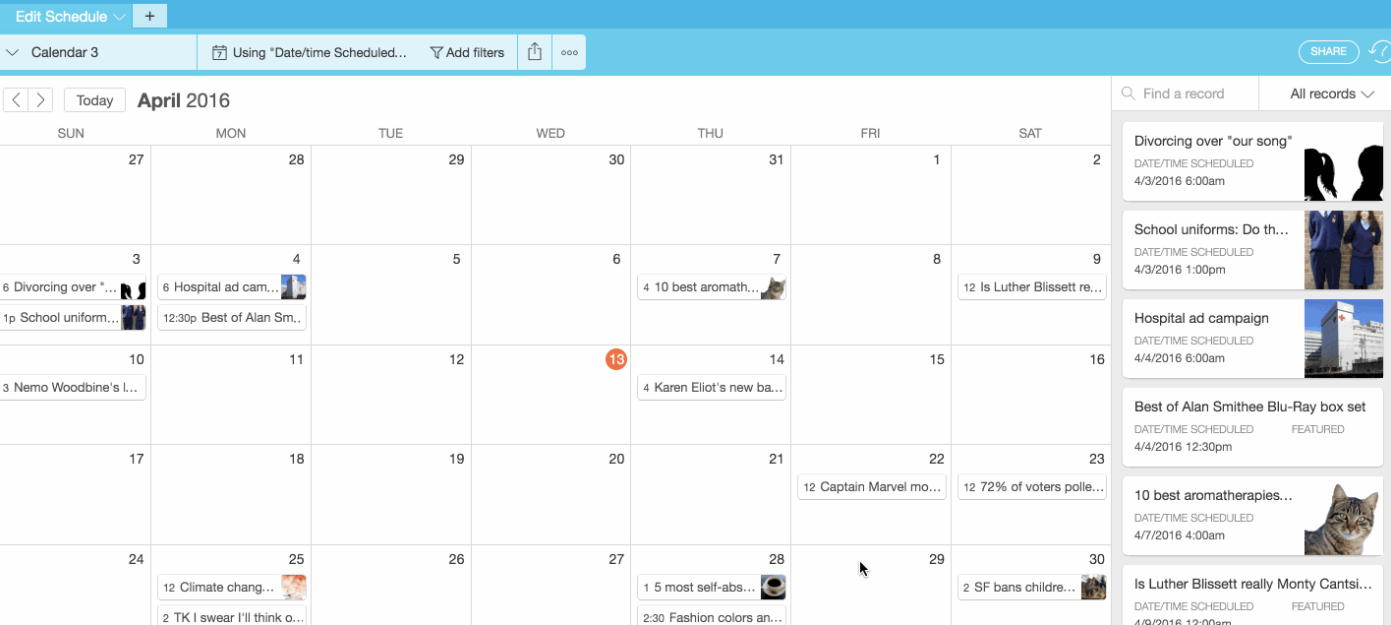
Think of your project as a tree, with many different branches and subbranches working together to help you achieve your goals. For example, if you’re a toy company working on getting production-ready for the holiday season, you’ll need to enter calendar deadlines, classify your products, and let each of your employees know what they’re responsible for.
That last part is important and something Airtable handles well — you can customize your view of your company’s internal databases to fit your needs and maintain a clear view of your upcoming tasks.
Airtable is useful for both small and large projects, but regardless of the size of your business, you’re not going to be successful unless everyone on your team is operating like a well-oiled machine. You need to keep everyone on the same page and ensure they understand what’s expected of them, when it’s expected, and how they’re supposed to go about completing their tasks.
Delegate, delegate, delegate
Let’s face it: You can’t do everything yourself. Even Superman has to call in the Justice League every once in a while. In your business, you shouldn’t be afraid to ask for help. Part of doing that is understanding your team’s strengths and taking advantage of them.
With Airtable, which has a desktop and a mobile app, you can access files wherever you are. You can share links and control who sees these links as well as import your data from Airtable into other programs. If some of your team members want to examine your data in different ways, you can easily move your information around and control the sharing settings.
You can adjust these settings to read-only (the user can only read the database), editor (the user can view and modify the database), and creator (the user has total control of the database). Airtable’s premium plans allow for more storage, and as a result, a higher ceiling for collaboration and operational control.
Collaboration features
Airtable knows the way your business works is going to differ from other businesses depending on your industry and what you produce. That’s why it has different features designed to fit the type of collaboration that works best for you. Here are a few:
- Comments and mentions. Anyone with creator, editor, or commenter status can add suggestions to individual entries on Airtable. There are text boxes for comments, and if a task is meant only for a certain person, you can mention them with an @ sign to alert them promptly.
- Collaborator fields. Maybe you realize it would be helpful to bring in someone else on your team for a second opinion. With Airtable’s collaborator fields, you can add colleagues from a dropdown list and send them notifications in your application as well as via email.
- Personal views. Personal views are a premium feature, but if your team emphasizes collaboration, it might be worth the price. Because your team has different departments — and people within those departments have different roles — it’s important that you’re able to separate things. Airtable’s personal views feature does just that, allowing individual members of your team to configure their tasks and projects to their liking.

Plus, Airtable’s kanban views can stack different collaborators’ tasks. This way, your director has easy access and can input work as it comes in from different members of the team. When wrapping up the work, those in leadership roles can switch to a view that arranges your ongoing projects by status and account, and put them in a “complete” group, eliminating the need to notify people one by one.
We’ve talked a lot about the different industries that use Airtable to improve their efficiency. But let’s take some time to focus on an area where Airtable’s functions particularly shine: the publishing industry.
Airtable and editorial calendars
The publishing industry is extremely active. There’s always content to write, edit, and promote. A lack of organization in this process can be disastrous.
Airtable’s editorial calendar template is a way to maintain this delicate balance. Whether you’re a digital-first publication or you produce a monthly magazine, you can plan your content, social media posts, and email marketing with Airtable’s template.
Say you have a sports section and an arts section. These two teams can arrange their assignments separately to keep things from getting mixed up and ensure everyone is on the same page. Airtable also has content analysis functions, so not only can you keep track of your assignments, but you can also analyze how they’re being received to plan your future content.
Understanding deadlines and making sure there’s no confusion is as important as the overall directive of the assignment. Without one, the other doesn’t matter. That’s the safety net Airtable provides.
Airtable at your service
Deciding to do something is the first step toward forming an action plan. The next step is brainstorming how to carry it out. And the last step is figuring out what tools you’ll need to assist you in this process.
It’s no surprise that so many companies — from magazines to electric car manufacturers — choose Airtable to help them with their day-to-day and long-term operations. Airtable is a flexible tool that’s intuitive, easy to understand, and designed to save you time.
In the next chapter, we’re going to look at the different elements of an Airtable database to better grasp how to get the most out of the platform.
Airtable tutorial
Airtable is a great place to store information, but who, exactly, uses it? Of Airtable’s customers, 35 percent are from the computer software industry. The higher education industry accounts for 14 percent. And hospitals and healthcare take up just over 10 percent.
Vastly different industries and companies use Airtable for their services. This flexibility is part of what makes it so attractive.
But to master Airtable, it’s best to be clear on what it does.
We’ve gone over Airtable’s different templates and how they can fit your business. In this chapter, let’s take a closer look at two of these functions — lists and calendars — and explore the different items within each.
Making lists
Where would we be without lists? Writing out our thoughts and creating an informal way to put all of the day’s work in one place is an invaluable exercise. You can refer back to a list, and using lists is a great way to stay organized.
Airtable’s to-do list and task management features provide this capability. What Airtable calls a “base,” the thing that has all the information you need for a project, is where this list lives. Think of a base like a workbook in a spreadsheet, where there are different tabs to separate things.
Airtable’s to-do list base is the place to mark urgent and non-urgent tasks, set deadlines, and categorize each of these tasks. The platform also makes it easy to search your list in a few different ways.
You can arrange to see your upcoming work when it’s due, or you can customize it according to priority. You can also track your workflow by marking off each task as you complete it. Perhaps the most helpful feature: You can take a big-picture look at the month ahead with a calendar view.
Airtable calendars
While Airtable’s calendar function is free to use, those with an Airtable Pro plan — we’ll get to pricing and a breakdown of different plans later — can use advanced features.
If you’re a deadline-driven business, you probably have a busy calendar to organize. With Airtable, you can color-code different records — which appear as rows on your database grid — for different views. Plus, the date field selector lets you choose different date fields. Fields are the columns in your database that correspond with your records. With the Pro plan, you can plot up to 20 date fields or ranges per calendar view.
Of course, the types of tasks you enter into your to-do lists and calendars are going to vary. In a busier season, your calendar might be bursting with color. During a lull, things might be more monochrome. Regardless of what you have going on, Airtable makes it easy to customize by day, three days, a week, two months, or a month, which is the default setting.
When you link a new record to a particular date, new date fields for this record will automatically populate. And if you’re in Pro mode, you can choose which date range or date field to assign to a certain record. You have the ability to control how your calendar looks and make sure your deadlines are accurately represented.
Working in Airtable
Airtable’s different elements are designed to coordinate and work together. Let’s explore some of these functions and how to use them:
- Move a record to another table in Airtable. First, let’s define an Airtable table. Essentially, it’s a list of similar items. These can be ideas, people, or objects. Every one of your bases needs a table, and if you have a complicated workflow, you’ll probably divide your base into multiple tables.
- Copy a table to another base in Airtable. This is a fairly simple maneuver with multiple options. One way you can do this is by selecting and copying all of your table cells and pasting them into a new table. You can also use Airtable’s syncing process to link an existing table to a synced table.
- Link between bases in Airtable. Understanding Airtable’s sync functions is also important when it comes to linking between bases. With Airtable Sync, you can automatically sync your views and the records in them from one base to another. While Airtable can’t link individual records across bases, you can always put all of your related tables in the same base, so everything’s in one place.
- Conditional formatting in Airtable. Conditional formatting functionality is currently available only on Airtable’s desktop application. Conditional forms allow you to display fields in a form based on conditions you’ve set. This way, the forms you want to appear will do so only once the conditions you’ve set have been met.
- Recurring tasks in Airtable. There are probably things in your business you do over and over again, but it can’t hurt to set a reminder. Sometimes if we get too comfortable, things can slip through the cracks.
With Airtable, you can manually create recurring dates with the fill handle function, which copies and pastes the values of your cells. By highlighting one cell in a date field and dragging it down using the fill handle, Airtable automatically fills in the cells below with that same date.
You can also do this with multiple cells in a date field, and Airtable will fill in evenly spaced dates according to the cells you selected. Creating recurring records is a cinch. This way, you have a backup if you’re having one of those days and forget to do one of your tasks.
The process of moving records within a table in Airtable is simple. Just select the cell or cells in your database that you’d like to copy, and paste them into a selected range.
If the table you’re trying to move a record to doesn’t have similar fields, Airtable will try to create the correct fields during the process. There are also more involved automation functions for records that can help auto-populate new entries.

Syncing with Airtable means taking something from a source base and moving it to a destination base. To do this, you’ll need access to a shared view. You can use this view to create a new synced table.
Once this process is complete, all visible records in the view you source from will be available in your synced base. The types of fields that can be synced include numbers, dates, single-line text, and attachments, to name a few. But be warned that you can’t modify synced data in this base.
Every field in your form can have one or more conditions attached to it. Conditional form fields remain hidden by default. By setting conditions, you can make sure that your database looks the way you want it to since certain fields will only show up when a team member inputs the right values in that field.
Know your limits
You need to be strategic in deciding how to get the most of Airtable’s functions. Airtable’s lower-priced plans have caps on the number of records per table, automations, and storage. While you have unlimited bases and workspaces, your ability to operate within them might be limited.
Here’s a brief overview of each plan:
- Free. In the free plan, you can have up to 1,200 records across all of your tables. Each base can store 2 GB of files, and you can view your revision history for the past two weeks. With the free plan, you cannot add applications to bases, nor can you customize forms with a header image. Plus, all the calendar functions we discussed are severely limited, as you can’t create date ranges or plot multiple date fields.
- Pro. Airtable provides two different Pro plans. For both, you get 50,000 records with 20 GB of file storage. That’s a lot of space and value considering what you’d be using Airtable for.
Revision history spans a year, and you can unlock automation and applications like charts and graphs. Plus, you can change your views and customize forms. The date range setting is also available, making these plans a great choice to get the most out of Airtable.
What’s the difference between these two plans?
- 5-seat starter plan. The 5-seat starter plan costs $7 per user, per month on a monthly billing plan and $6 per user, per month on an annual plan.
- Comprehensive plan. This plan comes in at $24 per user, per month on a monthly plan and $20 per user, per month on an annual plan,
Becoming an Airtable master
If you’re just getting started with Airtable, you’re not going to understand everything right away. There’s a lot to take in, a lot of lingo to understand, and a lot to learn about how all of these elements work together.
But the work you put in will be worth it in the long run. Once you’ve been using Airtable for a while, you’ll be glad you spent time learning all it can do.
With this in mind, becoming an Airtable aficionado doesn’t just mean being a database master. It also means knowing how you can use this knowledge to level up with different integrations and outside software. In the next chapter, we’ll explore how to pair Airtable with other platforms to help your business operate at peak efficiency.
Airtable integrations
There’s a lot Airtable can do for you. We’ve spent the last few chapters going over all of these features in detail. But what if there was a way to make it even better? What if you could bring in outside features and software, pair them with Airtable, and supersize your operations?
Well, you can. In this section, we’ll dive into the different integrations you can use to streamline your processes and provide different perspectives when it comes to storing and analyzing your data.
Pick of the litter
Airtable offers many integrations and applications to make things more visually pleasing. You can find a list of all these options on the Airtable Marketplace.
When you’re figuring out exactly what you need from Airtable, consider what you want your database to include and how you’ll access it when you add data. Understanding Airtable’s integrations means going deeper into what makes it tick — and filling in any blanks that the platform might not be able to provide on its own.
Here are some of the internal and external Airtable add-ons to be aware of.
Charting
If you and your team are visual learners, consider Airtable’s chart feature. It enables you to put your data into bar and line graphs as well as pie and scatter charts.
You can customize the integration with color-coding and ensure that specific data points are tied to records within your database. Sometimes, the best way to get the most out of your data is by approaching it from a different perspective, and that’s what charting offers.
Searching
If you’re working on a project in Airtable and inputting data as you go, you’ll want an easy way to refer back to your entries. With Airtable’s search feature, you can enter queries and filter the results to get the records you’re looking for. You can also search across fields or views within your tables.
Importing from a third party
Say you’re conducting an audit of your old and new clients. Comparing and contrasting the two could provide valuable insight into how your customer base has changed. But in this example, your list of clients from a few years ago lives on an Excel spreadsheet.
Don’t worry: As long as your spreadsheet is a CSV file, you can create new records in an existing table with Airtable’s CSV functionality.
There doesn’t have to be a through line from your field names in the CSV file and your Airtable database, eliminating a lot of the manual work you’d have to do otherwise. Plus, the CSV import app recognizes your past imports and adjusts to customize the experience for future imports.
Designing pages
Airtable’s page designer app adds a bit of fun to your business. You can create business cards, catalogs, and invoices using the data from your records. The layout is entirely up to you, and you can even customize images and static text. When you’re done, you can turn your creations into PDFs to create a file that’s easy to access.
Scripting
Scripting is all about making things more efficient. Airtable’s scripting capability decreases the time you spend working on recurring tasks and levels up your data analysis. You can design templates around records in bulk, design filters to help access data quicker, and make custom reports.
In movie-making, a script starts as a blank page, with the screenwriter’s imagination going to work to build the world. Airtable’s scripting integration uses the same idea — but instead of using actors and sets, it uses your business, its data, and your operations.
Importing to and from Google Sheets
You likely stored data elsewhere before you began using Airtable, and you don’t want to lose it. Many companies use Google Sheets, and if you’re one of them, there are ways to move the information you have stored back and forth from Airtable to Google Sheets.
- Zapier. Zapier is a third-party application that works well with Airtable and initiates a fairly seamless information and record swap from Airtable to Google Sheets. There are a few different ways to do this. Zapier has guided workflows to help you through the process and define the conditions in which this transfer is possible.
- Starting out. If you’re just building your records or starting a project that doesn’t have a lot of data yet, you can easily sync your Google Sheets and Airtable database. Plus, any imports you make will be reflected in Airtable and vice versa.
- Airtable Importer. This Google Sheets-based add-on allows you to place tables from Airtable into Google Sheets. However, this process doesn’t include automated sync, so you’ll have to import the whole table yourself.
It all depends on what works best for you and how you like to organize your data. But if there are certain functions you like with Airtable and certain functions you like with Google Sheets, you can rest easy knowing that you don’t have to choose and your data doesn’t have to be isolated on one or the other.
Plus, Google Sheets isn’t the only large-scale integration you can pair Airtable with. Enter JotForm.
Jotform and Airtable
Think of Jotform as a chameleon. It can take many different shapes and adjust itself based on the application you’re working with. This is certainly true regarding its Airtable integration. Jotform’s form-based tools pair extremely well with Airtable’s spreadsheet-database capabilities.
With Jotform’s Airtable integration, you can send data from your forms to Airtable bases or tables and automatically send your form submissions to an Airtable database. You can also track sales leads and manage projects seamlessly, eliminating the need for a middleman.
Even better, your teams can send data into multiple bases and tables, which can be extremely helpful if your business traffics in lots of data. Airtable’s templates and Jotform’s forms are extremely like-minded in helping you with larger-scale tasks, like forming a budget, or smaller-scale tasks, like planning an event.
This integration is invaluable, as you won’t have to do cleanup or translation from one platform to another. When you have a lot of data, you want to spend more time analyzing it and less time finding platforms that allow you to do so. Airtable and Jotform are a one-two punch that erases this problem and makes data storage and presentation a piece of cake.
Taking control
In any business, uncertainty is your enemy. The more control you have over your operations, the more you can attend to the actual running of your business.
The methods and platforms you choose to do this are the things that will guide this process. There’s so much you can do with Airtable — and so many platforms you can team up with — that it’s almost like running on autopilot.
In our last chapter, we’re going to compare and contrast Airtable with its competitors.
Airtable alternatives
You probably have a favorite ice cream flavor. It’s your tried and true go-to that never fails. But there are other flavors out there. Think of Airtable the same way. Sure, it’s a great platform for all your database and spreadsheet storage needs. But there are other platforms comparable to Airtable.
Your overall goal is to get the most out of your business, so you should pursue all avenues to help accomplish this goal. After all, it’s a smart business practice to make sure you know all your options.
In this chapter, we’ll explore some of Airtable’s competitors and how they compare.
Airtable alternatives
There are a lot of platforms that have similar functionality to Airtable, but in this section, we’re going to focus on five Airtable alternatives with similar features.
1. Plutio
Plutio is there for the little guy. Its software is tailored for the small business and freelance community. You can create proposals, invoices, surveys, and forms. You can track the time you’re spending on projects and assign tasks to your team just as you would on Airtable.
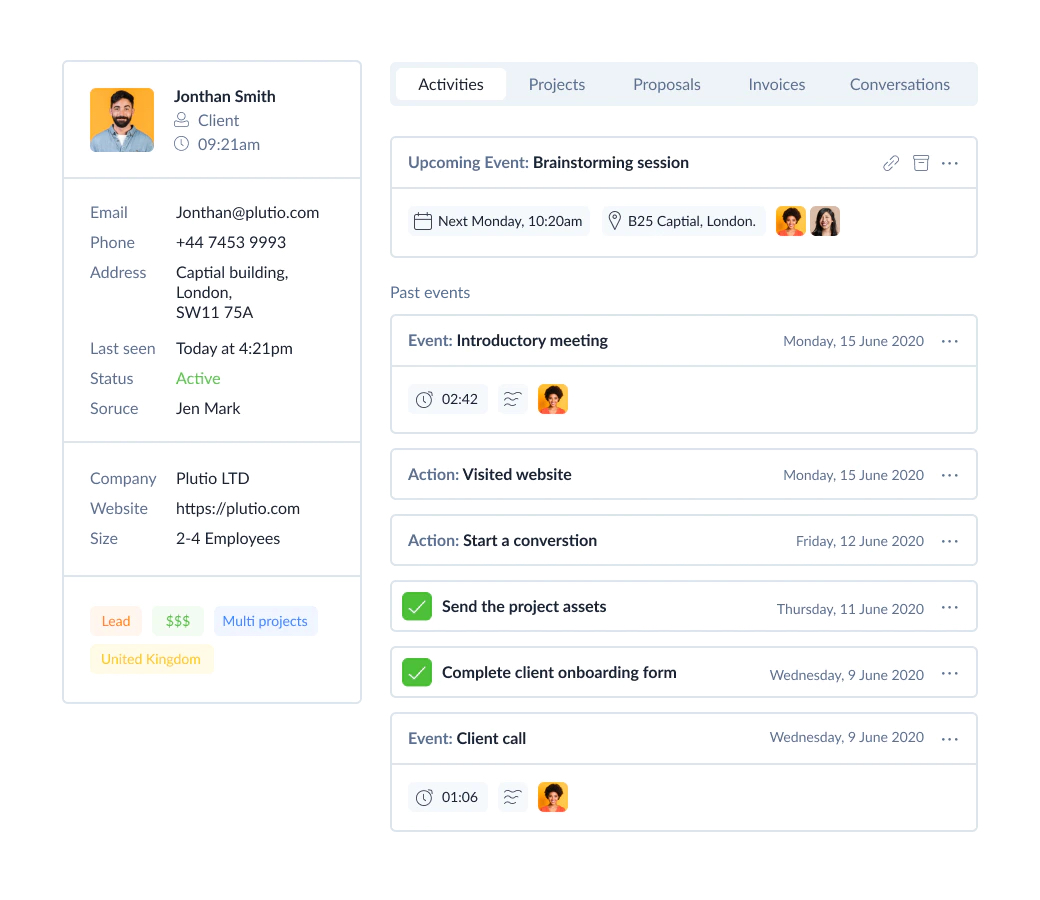
Plutio differs in that it isn’t built for large-scale businesses. But if you know its limits, there’s a lot it can do for you.
2. Asana
Asana is all about simplification. It’s a great way for everyone on your team to personalize their tasks and upcoming calendar items. You and your team can give each other assignments and get notifications when they’re finished. Asana doesn’t have charting or some of Airtable’s more advanced features, but if you’re looking for a streamlined project management tool, Asana is a great option.

3. Trello
Trello is a database hub. You can arrange different business contacts by category and add notes about each of them to stay organized. Plus, Trello is a great project management tool. You can divide assignments into different stages, create individual tasks within these stages, and assign them to team members.
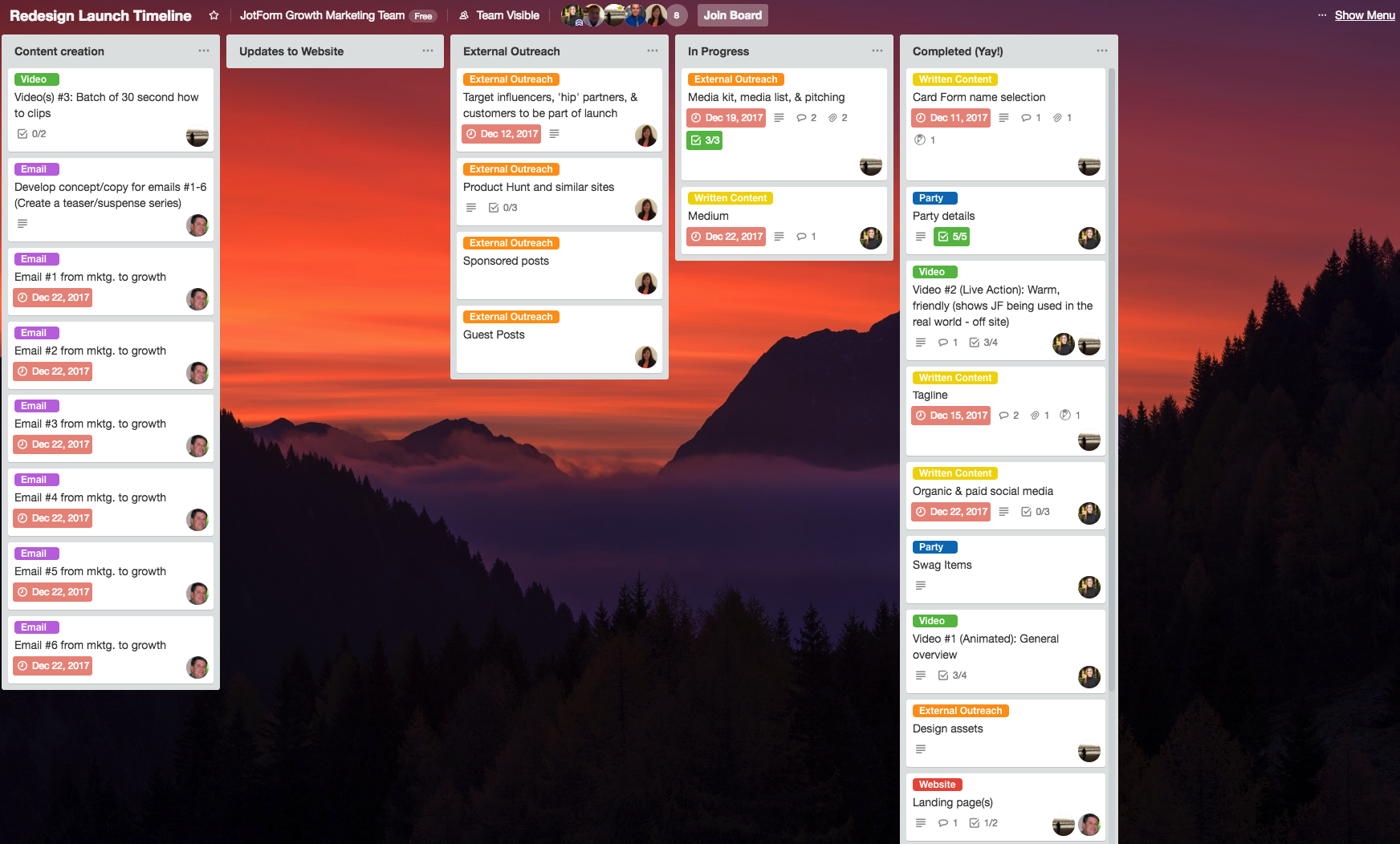
The only drawback: Trello is a fairly simple platform and might not have all the capabilities you’re looking for in a database.
4. Agiled
Like Airtable, Agiled is a tool for large-scale client, lead, and employee management. You can create projects and tasks, track time, and host your employee attendance check-ins. Its kanban-style boards make workflow simpler and create visualizations to get everyone on the same page.
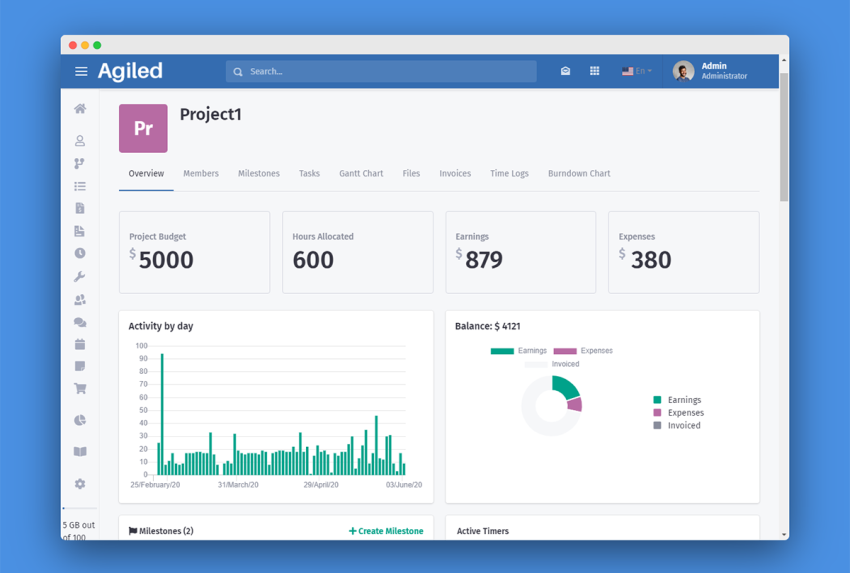
Agiled also has contract and proposal generation features as well as a built-in insight feature for data analysis and taking stock of your business.
5. Notion
Notion’s functions are pretty similar to Airtable’s. But where Airtable works like a database-spreadsheet hybrid, Notion is more text-based. You can make “pages” and add lists and headings within them. You can create to-do lists and easily communicate and collaborate with your team. You can even create databases with fields just like Airtable.
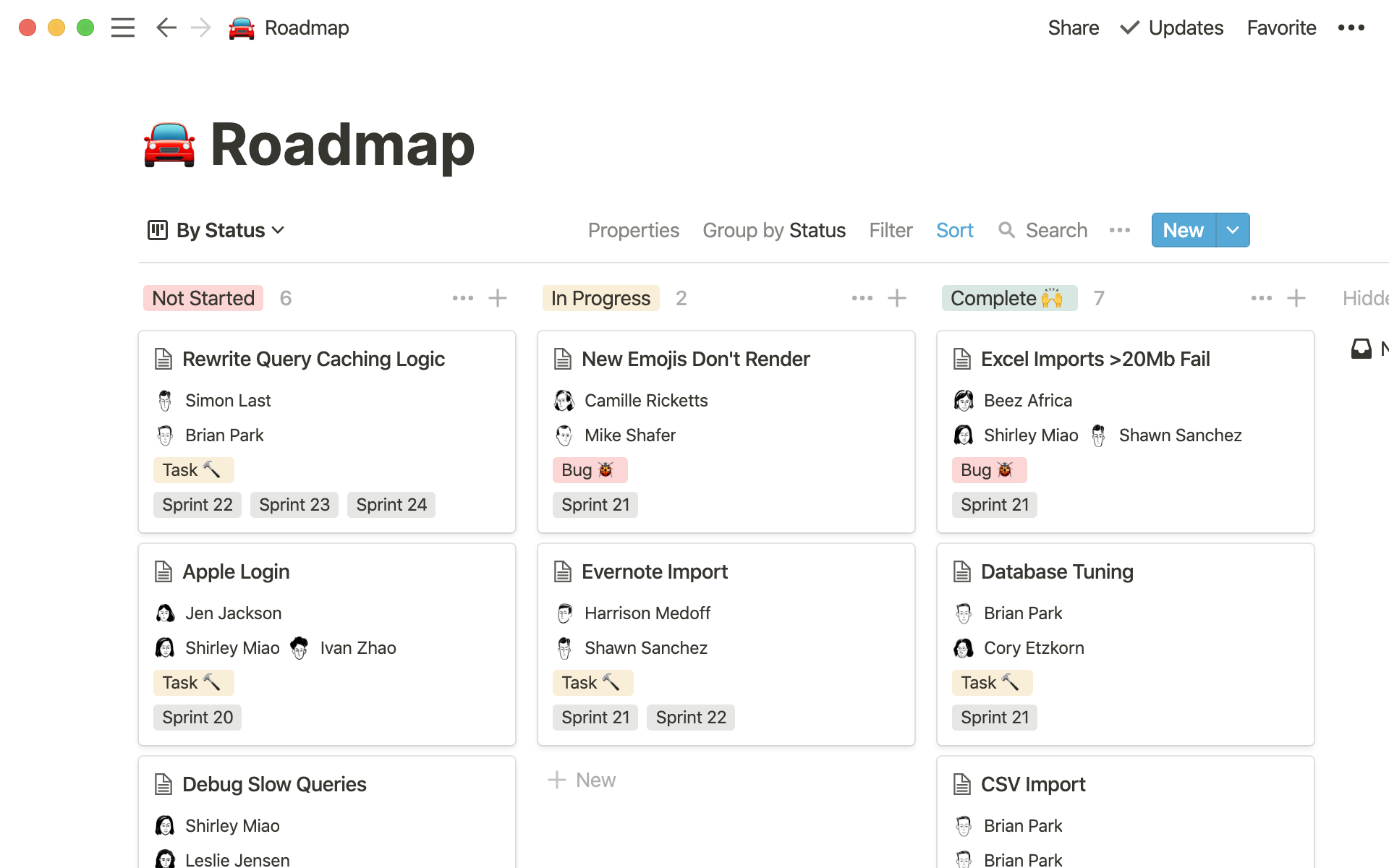
But be warned: You won’t be able to link fields to other tables, and Notion isn’t great if you have a large number of records to input.
Smartsheet is a close cousin to Airtable
In addition to these applications, there are some platforms you might have heard of that draw comparisons to Airtable more often than not. One of the most prominent is Smartsheet.
Smartsheet markets itself as a large-scale project management tool with collaboration capabilities that separate it from Google Sheets and Microsoft Excel. But when you compare Smartsheet to Airtable, Smartsheet falls more on the spreadsheet side of things.
Both Airtable and Smartsheet are no-code/low-code solutions catering to similar businesses, with Smartsheet leaning more on the mid-market side. Smartsheet’s conditional formatting options are more advanced than Airtable’s.
Like Airtable, Smartsheet offers its own marketplace with integrations you can use to make it even better. These connections are tailored around Smartsheet’s spreadsheet-first mindset.
Overall, in the Smartsheet vs Airtable debate, neither is that different from the other. But it can’t hurt to explore Smartsheet to see what you like most about it. Much like two languages might have similar words to describe different things, these two platforms are at the forefront of data storage, and understanding the intricacies of each can only help your business become more effective.
Hot on the trail
For a while, Airtable has had a leg up in its particular market. But that’s slowly changing. As Microsoft and Google realize the potential of spreadsheet-database hybrids — as well as the clients that are embracing this technology — they’ve begun to roll out their own versions.
Google Tables
The goal of Google Tables is to make tracking projects easier through automation. Tables uses what it calls “Bots” to help with data sharing, collaboration, recurring projects, tasks, and tracking items within these tasks. It works in a wide array of areas, like Airtable, from CRM to product development.
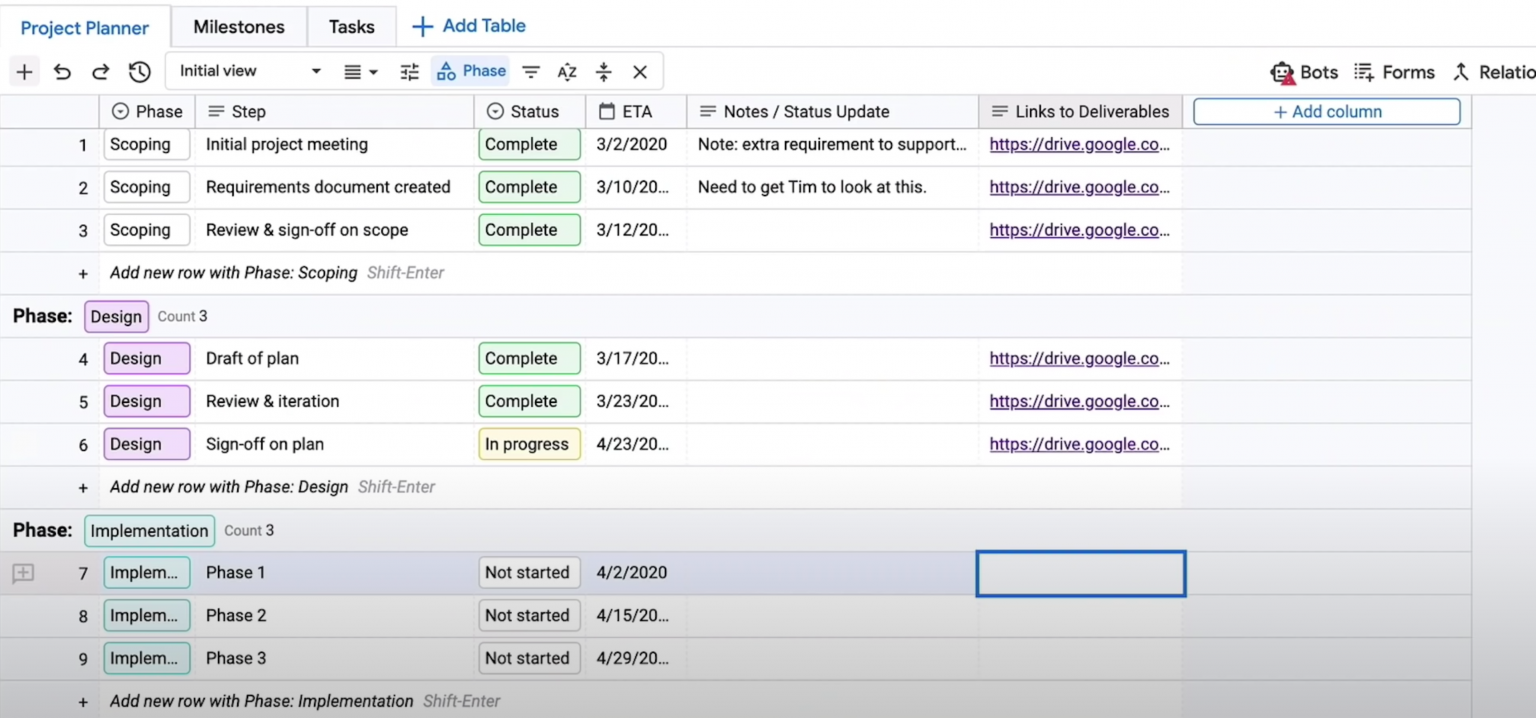
Plus, like Airtable, Google Tables has different elements that work together. The table is at the top of the pyramid, with workspaces branching off. A column in a table is predefined, so you don’t have to specify the type of data again before actually entering it. Google Tables also provides multiple views based on how you’d like to see your data.
Since it’s a Google product, Tables works best with other Google apps. There are pros and cons to this. If your business already uses Google, you can keep everything in house, whereas with Airtable, you could be working across different platforms. But on the flip side, a Google product is going to work best with its counterparts, so if you use non-Google products, your workflow might be more complicated.
Microsoft Lists
Lists is a fairly new product from Microsoft. Much like Google Tables and Airtable, the name of the game with Lists is task tracking, collaboration, and custom views.
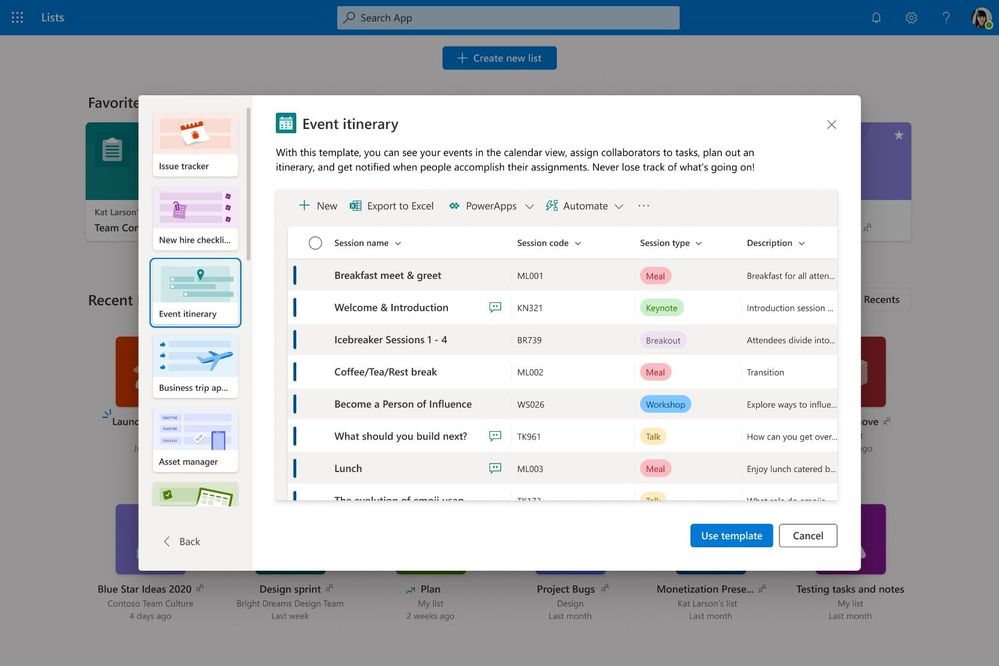
But Lists doesn’t have a kanban view or custom data form entry — yet. Its three main views are grid (which is similar to Airtable’s default), gallery, and calendar. Plus, it can make rules for your data based on the end goal of your project and send notifications about them.
As for where it differs, Lists is more of a “smart information tracking app,” which means you’re making lists of information and managing them around templates. Think of Lists as an evolution of other Microsoft functionality, but new and improved.
There’s one more platform that’s fairly comparable to Airtable, and it comes from JotForm.
Jotform Tables to the rescue
We said before that other companies are catching up to Airtable and working on launching solutions with similar compatibility. That’s exactly what Jotform has done. Released in late 2020, Jotform Tables, a no-code productivity data management app, makes spreadsheets that have database functionality.
Users can organize and manage data in one centralized location. And you can control what’s displayed in your table by hiding columns, which allows you to focus only on specific information.
Your Jotform Tables data is automatically updated whenever your form receives a new submission, making simultaneous work and collaboration possible. True to its meticulous form, Jotform has designed more than 260 table templates to choose from, so any type of business will find something to help improve its efficiency.
As for views, Jotform offers five different options — tables, cards, uploads, reports, and calendars. We’ve talked about tables, so let’s break down the other four.
- Cards. A card represents all submitted data in individual entries. The most recent cards entered appear first.
- Uploads. Here, you can view files that have been uploaded through your forms. You’re going to collect more than text through your forms, and this is an easy way to view that information.
- Calendar. Jotform Tables’s calendar view allows you to access information provided by those who filled out a form. Plus, you can add new entries and pull up your calendar at any time to see the week or month ahead.
- Reports. This feature creates charts and graphs from the information in Jotform Tables for quick and easy data analysis. Jotform has integrated its Report Builder into this view, so you’ll get all of its capabilities in a new package.
Jotform’s goal is to eliminate steps in the table-building process. But if you want to have total control and do things manually, you have the option to build your own table. That’s the great thing about Jotform Tables — because its back end is so rich, you can use it for whatever your specific business goal is and shape it to your preferences.
Making a scouting report
You’re only as good as your opponent. It’s cliché, but it’s true. And if you’re considering Airtable, it’s good to know what else is out there. That way, when you’re deep into a spreadsheet, you can rest easy knowing that you’ve made the right choice and that the work you’re putting in will pay off in a big way.
Have it your way
Airtable is very much what you make of it. Though it has templates and built-in features, it exists as a canvas for you to paint on. Whether you’re a shipping business tracking your orders or a technology company working on the latest and greatest version of your flagship product, Airtable can help save time and money in your workflow. And in the end, isn’t that what it’s all about?
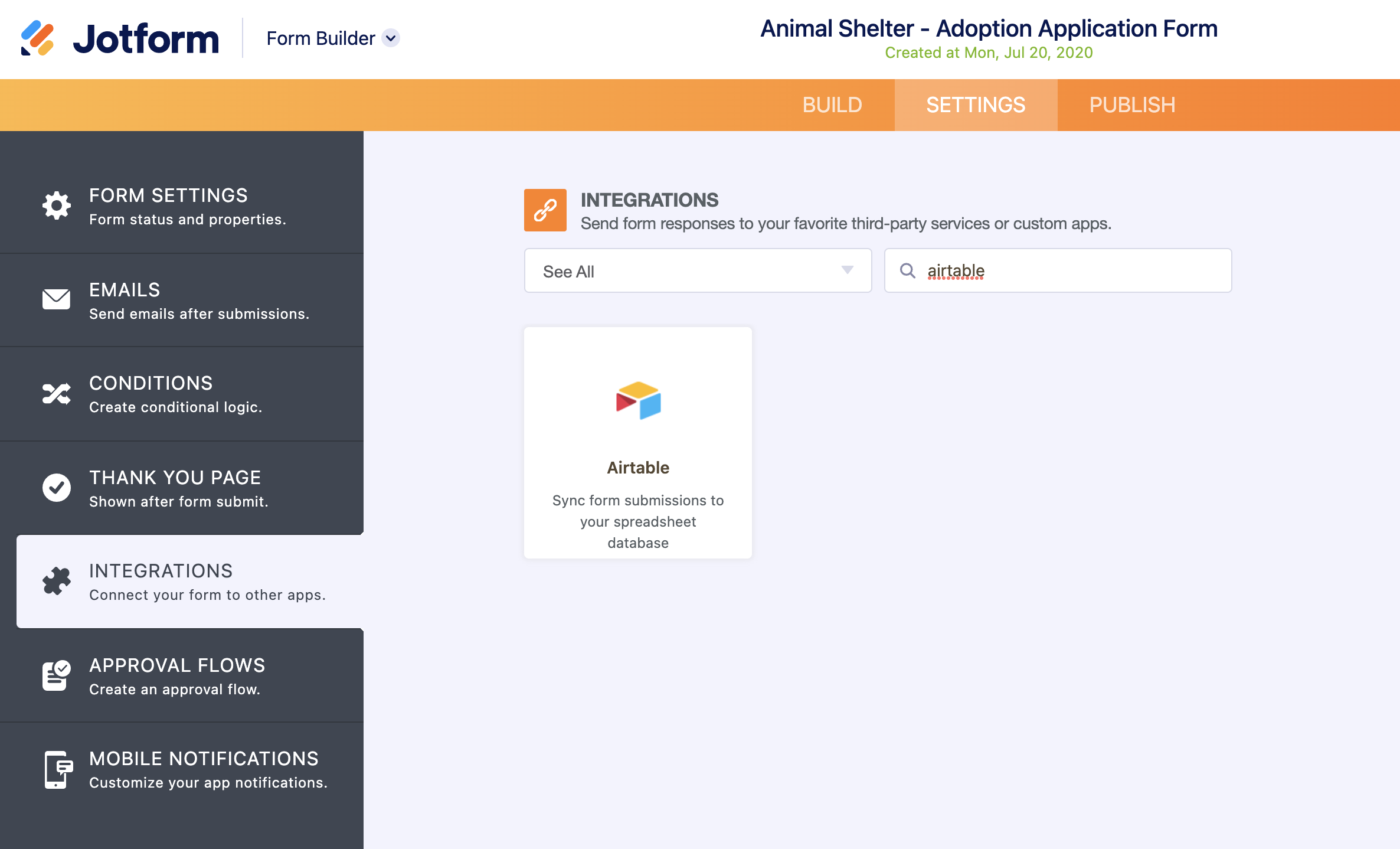
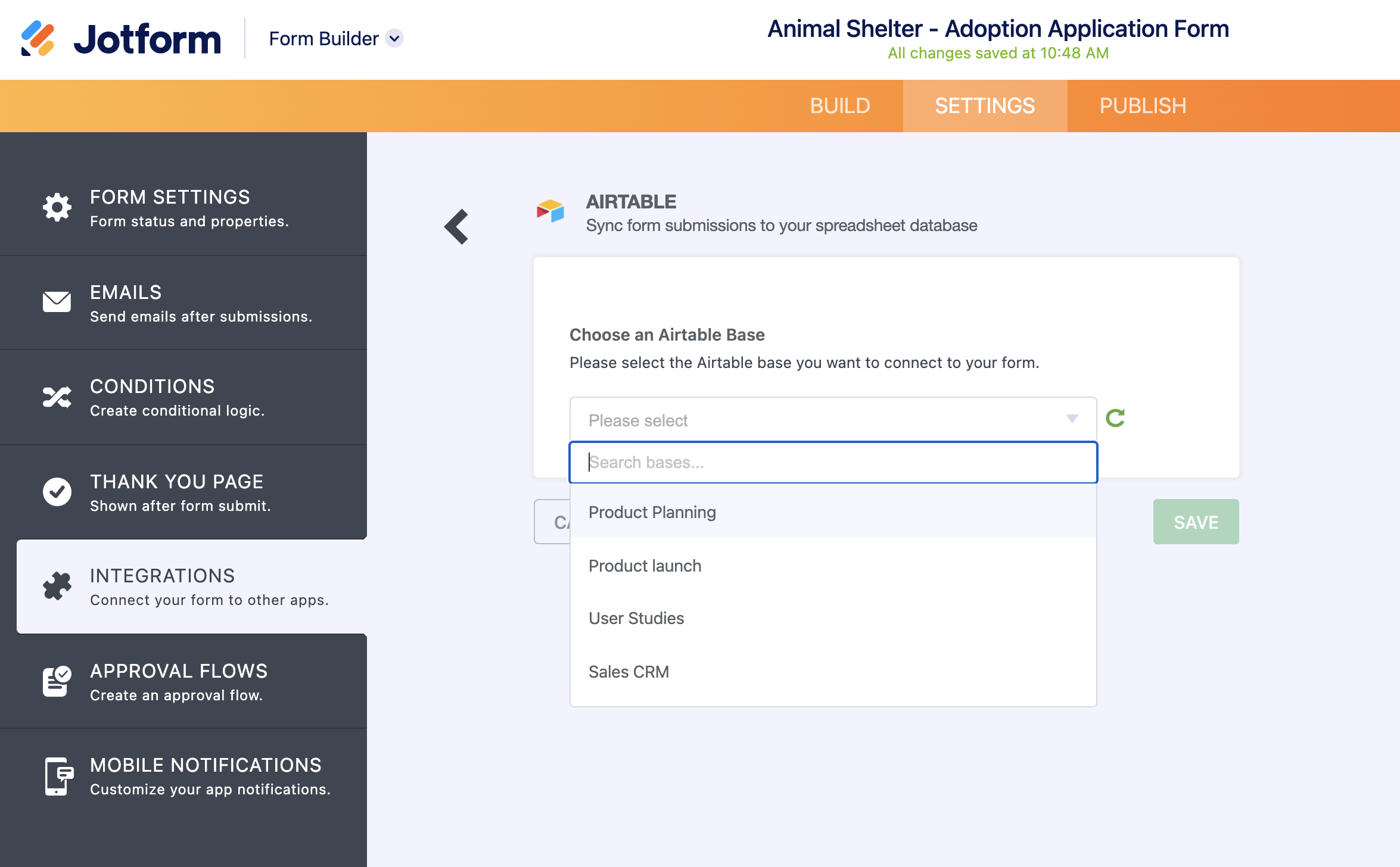
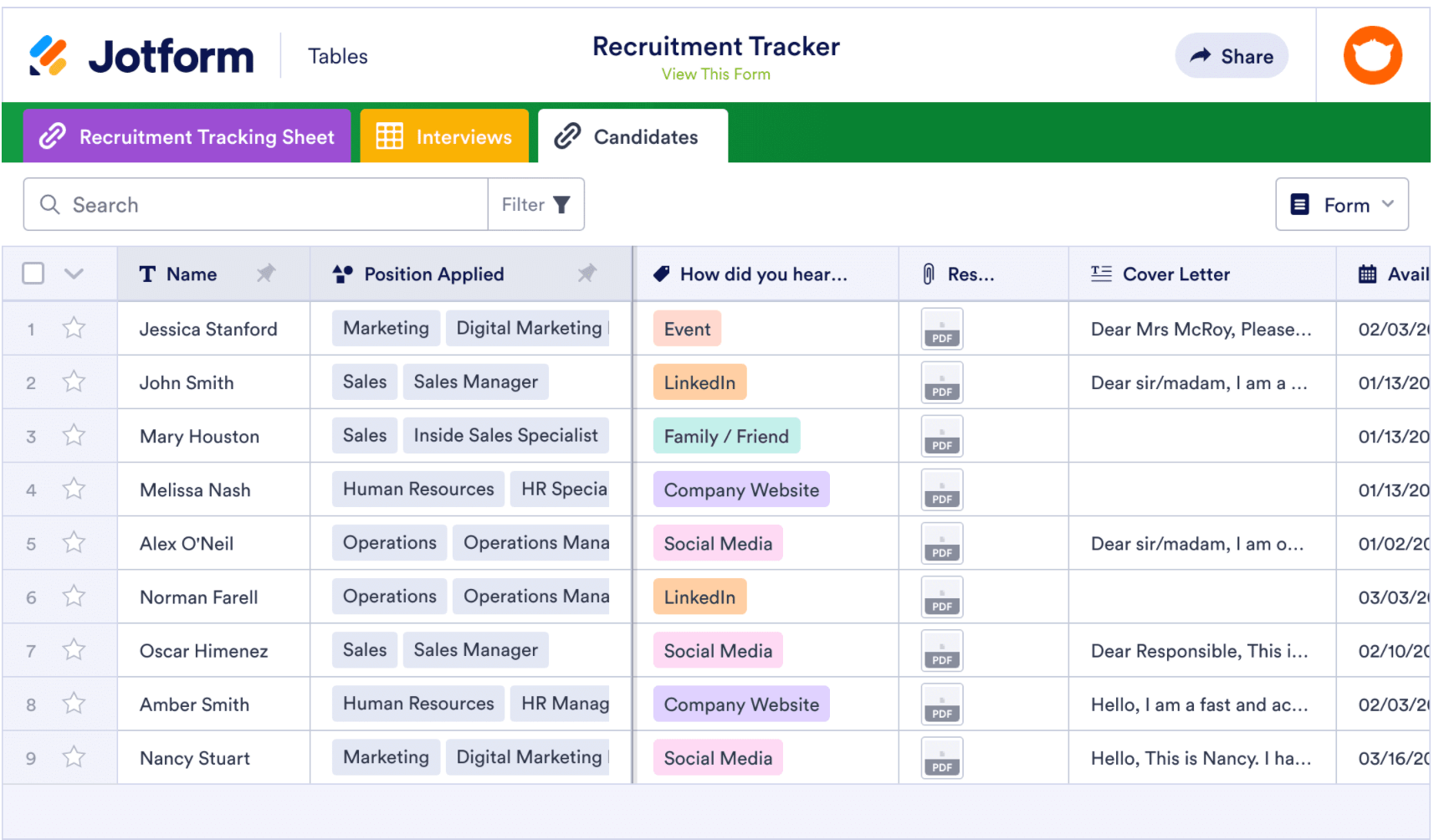
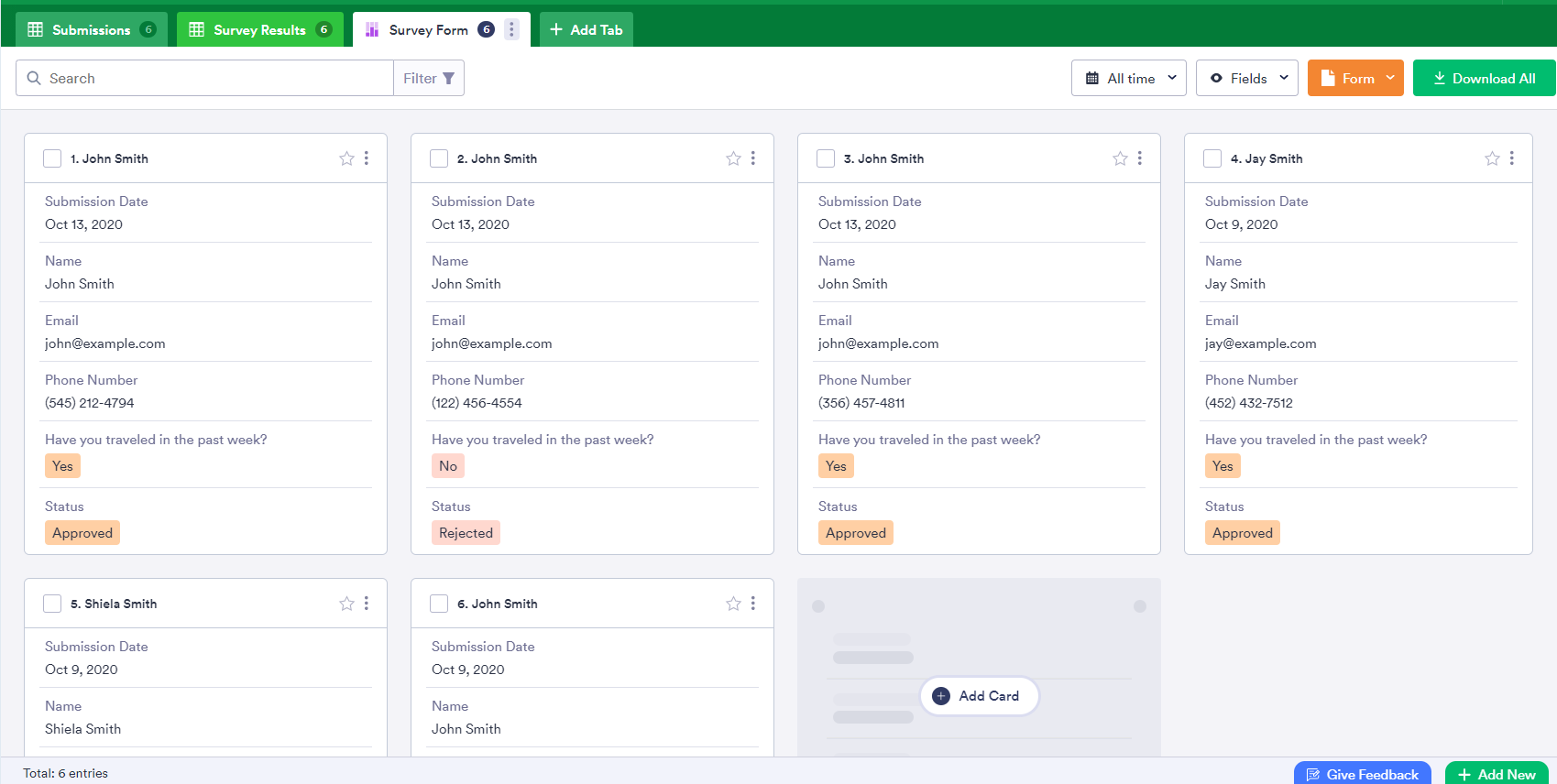
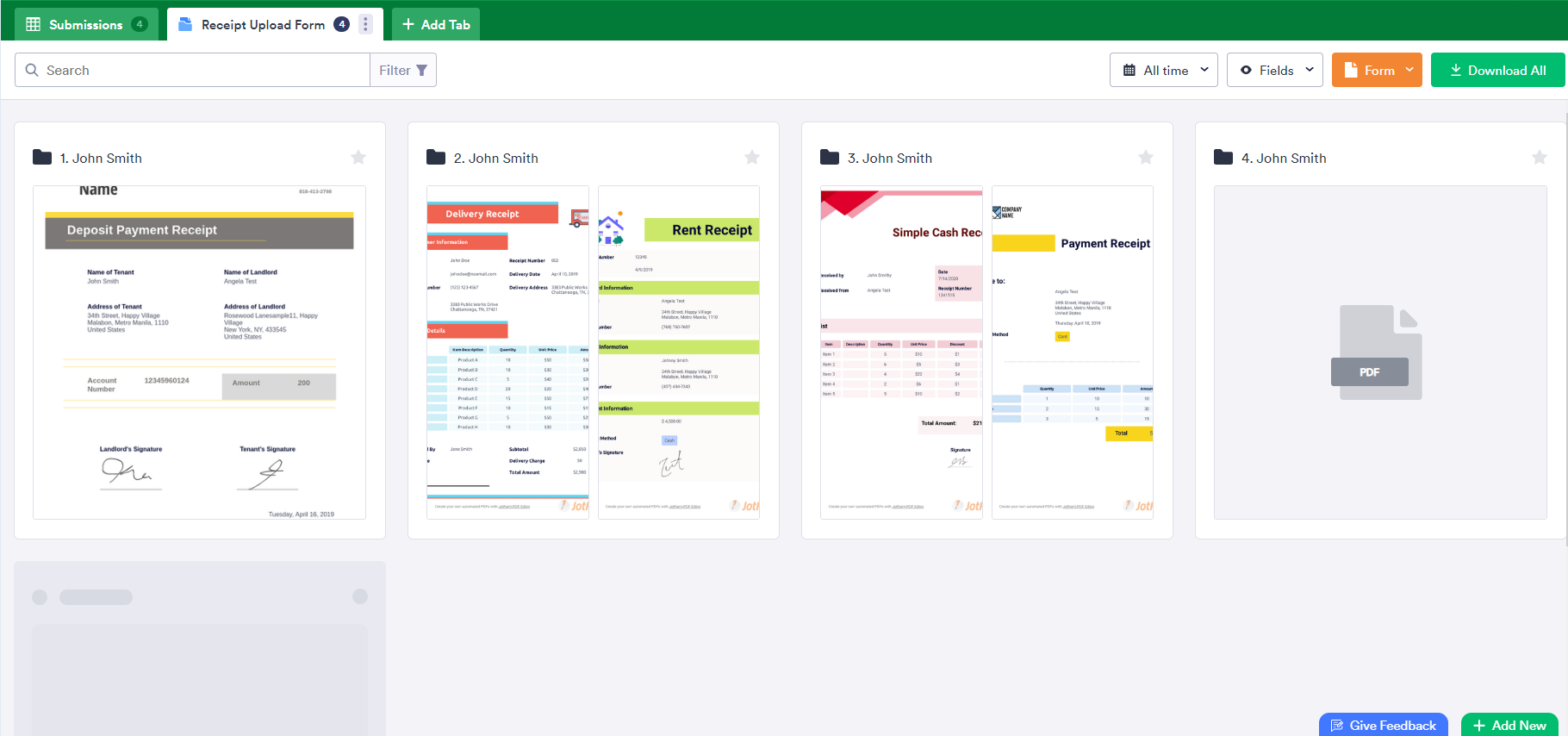
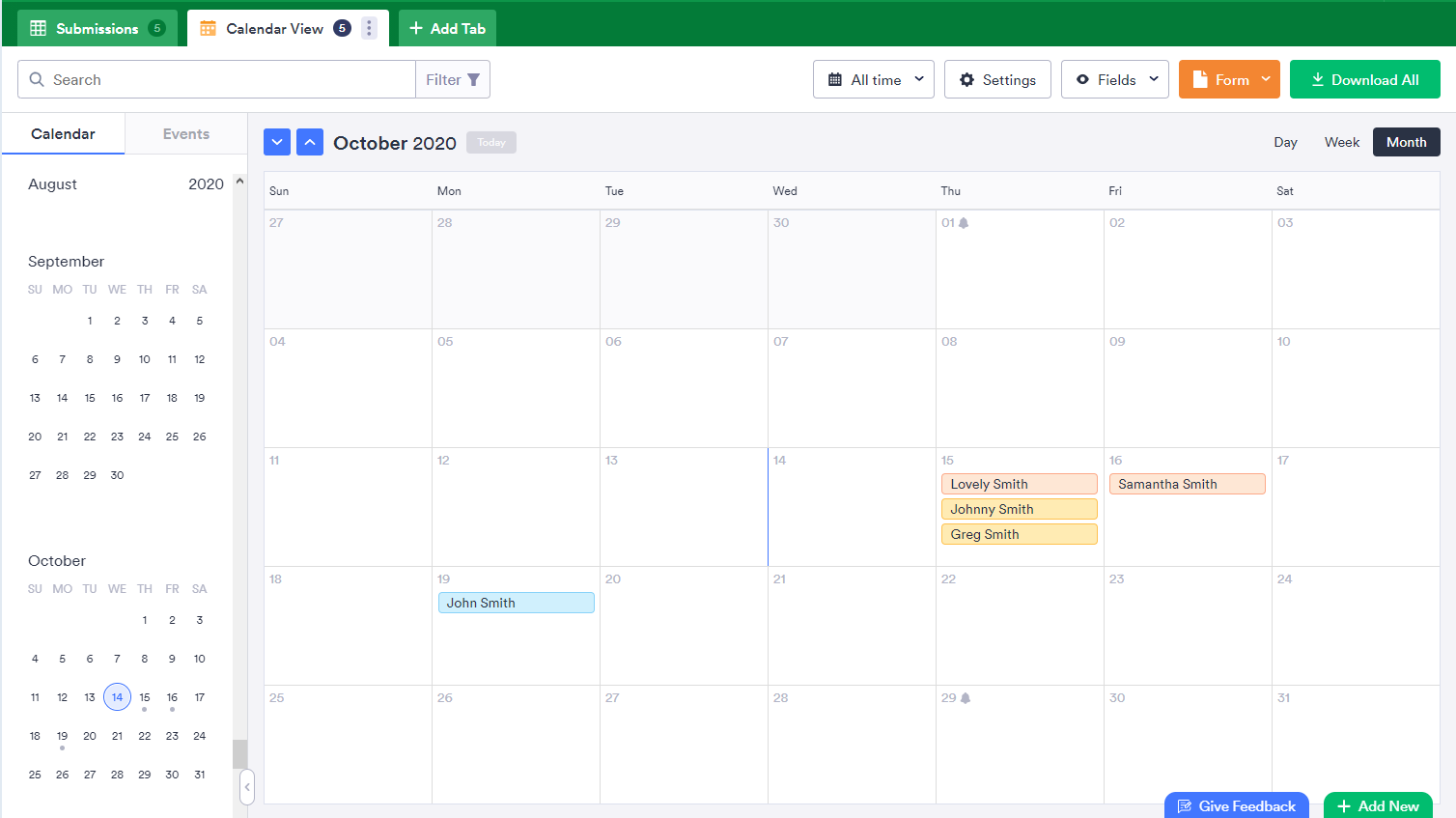
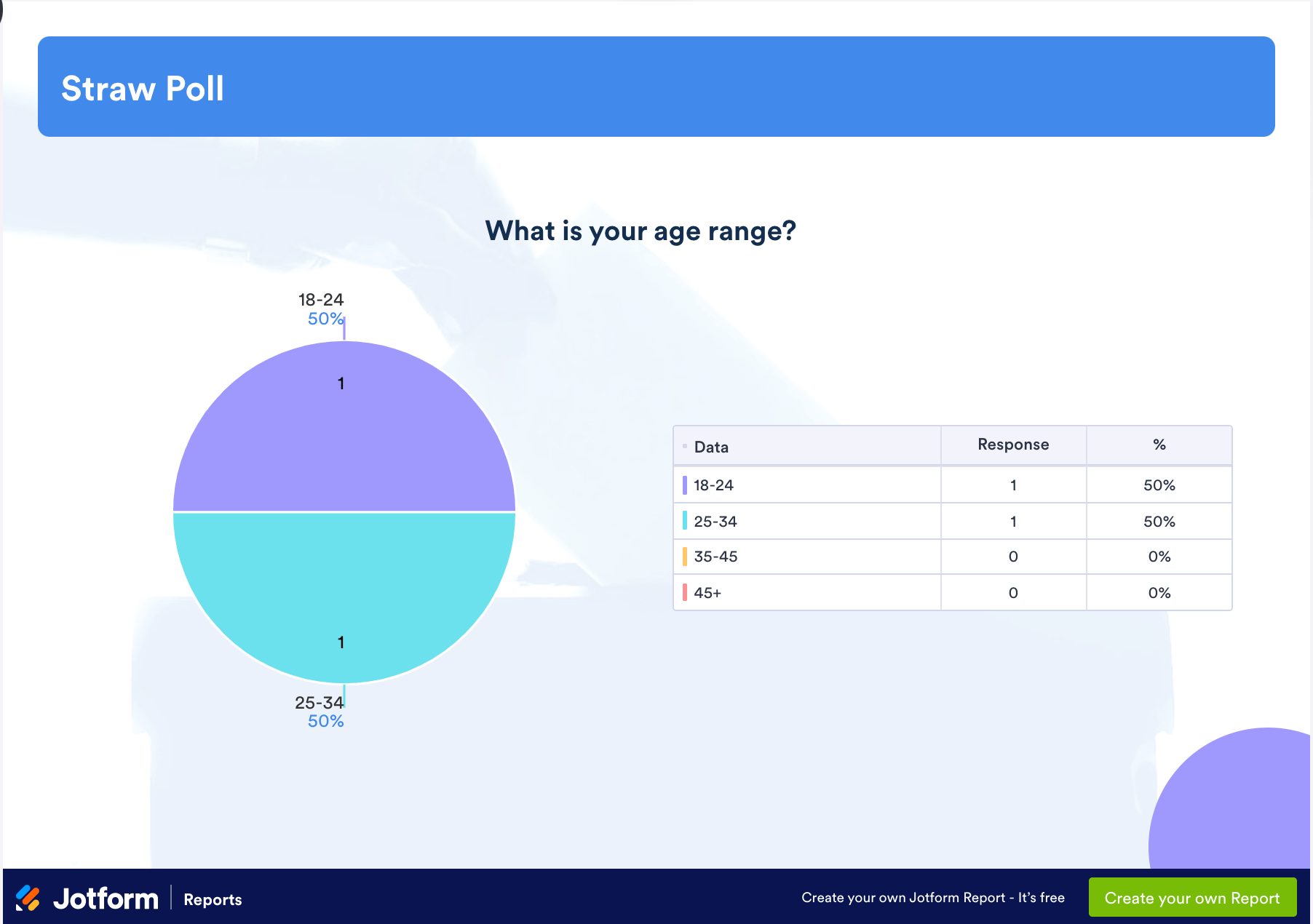







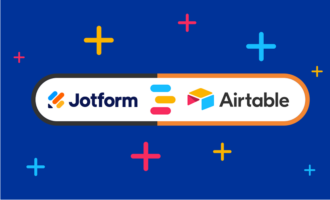




Send Comment:
2 Comments:
More than a year ago
Dear Jotform,
It's time for you to tidy up your tutorial information about "Way To Use Jotform Table" in pdf to be read & learned easier !!
More than a year ago
I had heard of Airtable a lot but wasn’t sure exactly how I could use it to help me with my data storage. My company gathers a lot of information across all our teams, and data management is very central to our operations. However, after seeing Jotform Tables's capabilities in the last section -which is no less than Airtable-, plus the benefit of powerful data collection form templates, I think I'll go with that.